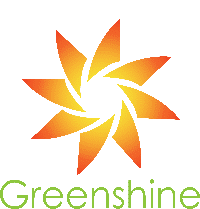A Beginner's Guide to Solar Panel InstallationPosted by Becky Johanson in The Basics.Solar energy is a renewable and inexhaustible resource. It converts sunlight into electricity using photovoltaic solar panels. Many people are adopting solar as a cost-efficient and reliable source of energy. Are you considering installing solar panels, but don't know where to start? Here's our little guide to help you install a solar-powered system.
The Solar PanelA solar panel has 4 main components:
Initial InspectionFirst, analyze how you are currently using electricity. Take a deeper look at your electricity bill to find how you allocate your electricity bill in the house. Then, you should decide whether or not your solar panel should cover the use of energy needs of your entire house or only a part of it. After checking these points, you will be able to determine the most suitable one for your needs. Tip: Unplug your devices! Did you know that even if you turned off your electric appliances, they still consume electricity? They will stay active unless you plug them out, so your electricity bill will be higher than what you should be paying. Roof InspectionAfter you have checked your power consumption, analyze your roof's measurements to validate the type of solar panel you can install there. Because of your roof's specific size, you should be careful with the solar panel's dimensions and its output to maximize the space on your roof. Solar Panel InstallationHire a professional. They are certified and know all the intricacies of the installation. Make sure that the roof, ground mounting, or tracking system you are using is engineer-certified for the area you are in. For example, if you live in an area with high climate variability, the mounting system and mounting brackets also need to be sufficiently weather-resistant. Solar Inverter EfficiencyThe power inverter is a box installed between the panels and your appliances that converts the generated DC to AC, which is suitable for use in your home. Their efficiency will have a direct impact on the payback time of your system, so look at the inverter efficiency before purchasing a system. Prices BenchmarkPrice is always an important factor when you want to buy a product. Quality-price ratio is an important element to include in your equation. The average price of a solar panel installation is typically $7-9 per watt. So, a 5 kW system would cost around $25,000-$30,000. Many utility companies offer incentives for solar panel installation, so look for price reductions or subsidies available for your home. Warranty LengthBe careful of the solar panel's warranty length. Try to aim between 5-10 years, as it will cover all the short-term issues you may encounter. Understanding Solar Panel Efficiency in Real-World ConditionsWhen installing solar panels—especially for outdoor lighting applications like parking lots or pathways—efficiency isn't just about panel specs. Real-world performance depends on:
At Greenshine, we conduct site-specific assessments before any installation to ensure optimal positioning and performance, even in challenging conditions. Solar Panel Installation for Lighting vs. Full-Building SystemsUnlike rooftop solar panels for powering homes or buildings, solar panel installation for outdoor lights is far more streamlined:
For outdoor lighting, every pole is its own power plant, eliminating dependency on main service panels or power providers. What’s Included in a Greenshine Solar Light System?When customers ask about "solar panel installation," they’re often thinking of just the panels. But Greenshine’s integrated systems include everything needed for stand-alone operation:
This package simplifies installation and removes the need to coordinate multiple vendors. Installation Tips for Maximum PerformanceHere are a few key guidelines we follow to ensure solar panels function at peak efficiency: 1. Avoid Shade at All TimesEven partial shading from trees or poles can cut energy output dramatically—sometimes by 50% or more. Panels must be exposed to open sky during daylight hours. 2. Face Panels True South (in Northern Hemisphere)South-facing panels capture the most sunlight. Minor adjustments can be made for regional differences or specific application goals (e.g., maximizing winter performance). 3. Set Correct Tilt AngleThe tilt should be equal to your site’s latitude for best year-round production. In some winter-prone areas, a steeper tilt helps snow slide off. 4. Check for Dust or DebrisAlthough Greenshine panels are self-cleaning during rain, periodic checks improve performance—especially in dusty, high-traffic areas. Permitting and Zoning ConsiderationsFor many solar installations, permits and inspections can slow down timelines. The good news? Solar lights usually avoid this hassle because:
Still, our team checks local ordinances to ensure full compliance—especially in HOA communities, parks, or historic areas. Choosing the Right Battery: Lead-Acid vs. LithiumBattery storage is a critical part of your system—it keeps lights running even when the sun isn’t shining. Greenshine offers both battery types:
We'll help you choose based on temperature, cycle needs, and budget. Maintenance Needs After InstallationGreenshine systems are low-maintenance, but we recommend:
We also offer maintenance plans for clients who want full-service monitoring. Installation Cost Breakdown: What to ExpectFor solar lighting installations, costs are typically bundled into per-unit pricing (i.e., cost per pole). This includes:
There are no trenching or electric connection fees—saving thousands per pole compared to traditional lighting. Solar Panel Installation Doesn’t Have to Be ComplicatedAt Greenshine, we design every system to be plug-and-play, modular, and fast to install. Whether you’re lighting a parking lot, public park, or private campus, our solar panel systems deliver:
You don’t need solar experience to start. Our team handles the planning, layout, and guidance—you get clean, sustainable light that’s ready on day one.
The Basics
|
ArchivesNo Archives Categories
Want More Info? |
LATEST NEWS & ARTICLES

